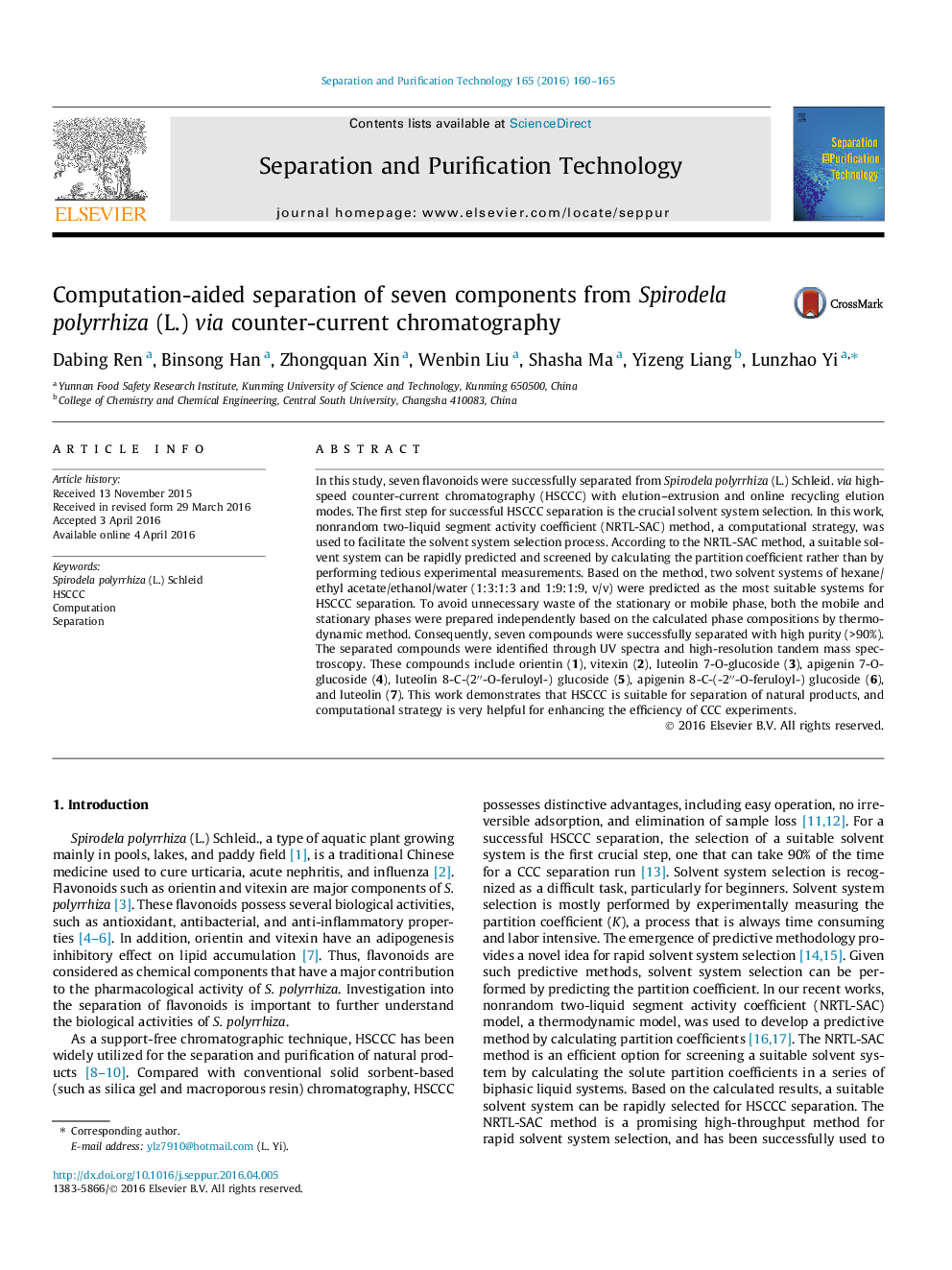| کد مقاله | کد نشریه | سال انتشار | مقاله انگلیسی | نسخه تمام متن |
|---|---|---|---|---|
| 639979 | 1456955 | 2016 | 6 صفحه PDF | دانلود رایگان |
• Computational strategy was used to select and prepare solvent system.
• NRTL-SAC method was used to predict suitable solvent systems.
• On-demand preparation of two-phase solvent system was employed.
• Seven compounds were separated and purified from Spirodela polyrrhiza (L.).
In this study, seven flavonoids were successfully separated from Spirodela polyrrhiza (L.) Schleid. via high-speed counter-current chromatography (HSCCC) with elution–extrusion and online recycling elution modes. The first step for successful HSCCC separation is the crucial solvent system selection. In this work, nonrandom two-liquid segment activity coefficient (NRTL-SAC) method, a computational strategy, was used to facilitate the solvent system selection process. According to the NRTL-SAC method, a suitable solvent system can be rapidly predicted and screened by calculating the partition coefficient rather than by performing tedious experimental measurements. Based on the method, two solvent systems of hexane/ethyl acetate/ethanol/water (1:3:1:3 and 1:9:1:9, v/v) were predicted as the most suitable systems for HSCCC separation. To avoid unnecessary waste of the stationary or mobile phase, both the mobile and stationary phases were prepared independently based on the calculated phase compositions by thermodynamic method. Consequently, seven compounds were successfully separated with high purity (>90%). The separated compounds were identified through UV spectra and high-resolution tandem mass spectroscopy. These compounds include orientin (1), vitexin (2), luteolin 7-O-glucoside (3), apigenin 7-O-glucoside (4), luteolin 8-C-(2′′-O-feruloyl-) glucoside (5), apigenin 8-C-(-2′′-O-feruloyl-) glucoside (6), and luteolin (7). This work demonstrates that HSCCC is suitable for separation of natural products, and computational strategy is very helpful for enhancing the efficiency of CCC experiments.
Figure optionsDownload as PowerPoint slide
Journal: Separation and Purification Technology - Volume 165, 13 June 2016, Pages 160–165
